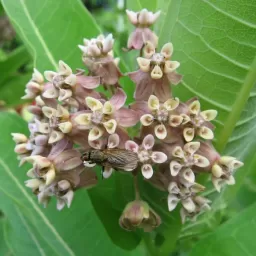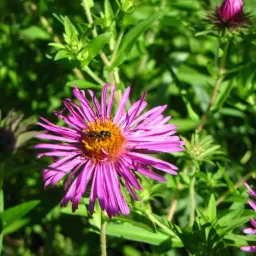Pollinator Garden
SVT’s pollinator garden is located behind the Wolbach Farm office building. This garden was designed to boost the health of pollinators--the native insects that pollinate the plants in our region. In addition to the pollinator-friendly, native plants, the garden includes a bee hotel that provides nesting habitat for solitary wasps and bees.
A good pollinator garden has a diversity of native plants in order to attract a wide range of pollinators. By including flowers or plants that bloom at different times throughout the season, the garden provides pollination opportunities for bees and insects for a longer period of time.

